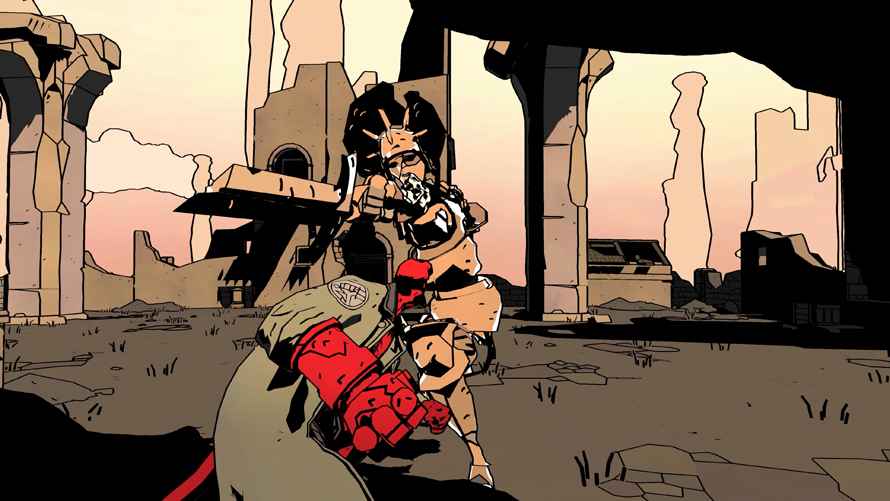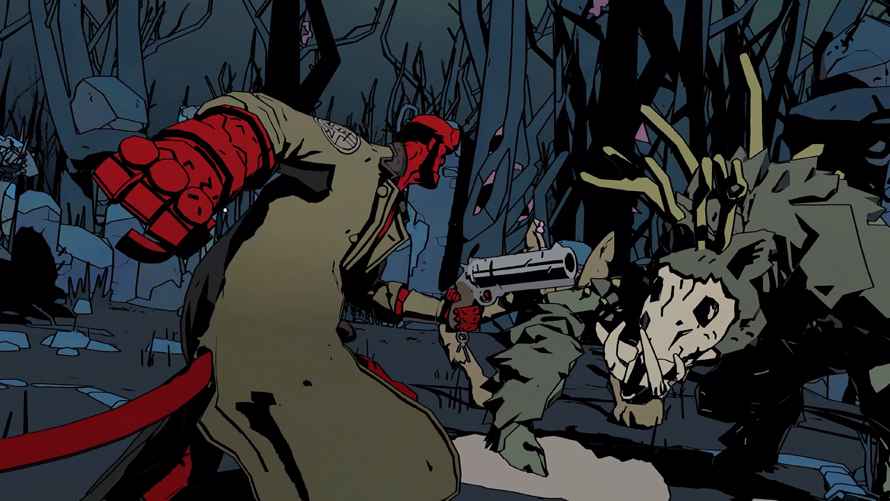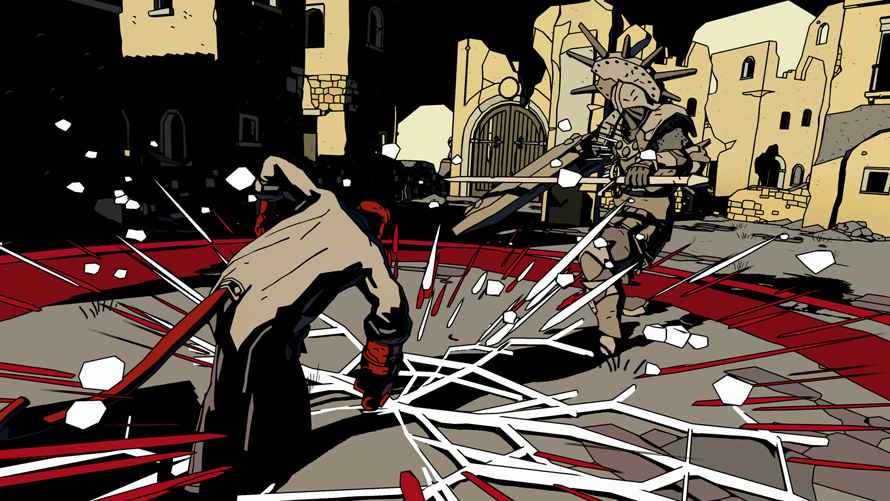Hellboy Web of Wyrd Review
It’s hard to believe it, but artist Mike Mignola and Dark Horse Comics first introduced us to Hellboy thirty years ago. The snarky demon with the sawed off horns still seems fresh. Maybe it’s because the big red guy just hasn’t been as overexposed as some of the gang from Marvel and DC. Sure, there have been films, television, animated series and a few games. While the live action movies did a pretty good job of translating Hellboy to the screen, no one has captured Mignola’s very specific art style. Hellboy Web of Wyrd attempts to do just that.
Genre Mashup
Hellboy Web of Wyrd is a unique fusion of an action brawler with procedurally generated levels and roguelike mechanics. Developer Upstream Arcade and publisher Good Shepherd have taken Mignola’s art and translated it to the language of a video game. Visually, at least, it’s hard to argue with the results.
Study the Mignola’s Hellboy comics and you’ll see a bold style focused on reds and blacks, lots of saturated colors with deep shadows and a disdain for clutter and fussy detail. Instead the emphasis is on bold visual expression and very smart writing. After all, Hellboy is an educated and articulate demon. If nothing else, Web of Wyrd is almost entirely successful in nailing the look of the comics. The game’s stylized art and writing have received loving, remarkable attention. Many sections could be transformed into comic panels without breaking a sweat.
The game’s narrative, developed with Mignola, is also very much in harmony with the books. Hellboy is sent on a series of missions into Wyrd, a sort of interdimensional alternative reality, to rescue a missing BPRD agent. Home base is The Butterfly House, a stately mansion built on the convergence of ley lines and interdimensional portals. The Butterfly House is where Hellboy gets his mission briefings and buys and upgrades new weapons and tools. He can also opt to return to the Butterfly house mid-mission to spend whatever coin he’s earned so far. This is a game where the roguelike structure works pretty well. The procedural generation, not so much.
Fist Bump
Hellboy Web of Wyrd‘s combat is pretty straightforward. Hellboy has a ranged weapon like a pistol, machine gun or shotgun. He also has his iconic stone fist called the Right Hand of Doom. Hellboy can punch and block with his fists. He can also parry certain attacks which open enemies up to devastating counterpunches. Most often, ranged weapons are used to stun enemies, making them vulnerable to melee attacks. He can chain melee and ranged attacks together.
Hellboy’s secret weapon is a powerful special attack called Payback, which charges over time as the hero takes hits. Payback is both a strong finisher that decimates weaker enemies, and a life saver. Although he has infinite ammo for his guns, Hellboy has to manually reload, round by round. Pausing to reload invariably opens him up to enemy attack.

As he makes his way through the levels, Hellboy finds shrines that heal him or let him choose a temporary buff or stat boost. Gates to areas with health recovery or treasure are well marked, so that Hellboy can select which path to follow. Invariably, all roads lead to the mission’s end boss, most always several degrees more challenging than anything else in the level.
Face Plant
Hellboy Web of Wyrd looks like the comic and, in theory, its combat mechanics should bring those drawings to life. Unfortunately, as an action game, Web of Wyrd has some deal-breaking issues. The first is its animation style. The developers have stated that — and I’m paraphrasing — they went for a purposely choppy style of movement and animation. It looks and feels like everything, from walking to punching, is dropping frames. The actual framerate holds steady. Well, usually, as there are real framerate drops in some transitional sections as well.

It’s hard to overstate how mistaken this technical decision was. Given the added annoyance of Hellboy not having the ability to run, but just plod along, painful step by step, the player watches hours of choppy animation. Additionally, the procedurally generated levels are connected by long, empty spaces through which Hellboy has to walk. The levels themselves are rarely interesting, often repetitive and contain bits of meaningless architecture, like stairs that go nowhere. All the effort to conform to Mignola‘s aesthetic gets wasted in cookie-cutter levels that procedural generation renders bland.
Web of Wyrd’s combat also gets predictable and repetitive almost immediately, topped off by a large number of mechanics that add frustration. Example: Hellboy’s ranged weapon stuns an enemy, but since he can’t run to the demon, by the time he reaches the monster the stun effect is gone. I could go on, but the bottom line is that combat is pretty frustrating.

If Looks Could Kill
As a comic brought to life, Hellboy Web of Wyrd nails the narrative tone and art style that Mike Mignola perfected decades ago. As an action game, there are impediments to enjoyment, starting with the purposefully choppy animation and Hellboy’s lack of fluid movement. What works in the pages of a book doesn’t necessarily translate to fun in the hands of the player.
***PC code provided by the publisher for review***
The Good
- Captures the art of the comic
- Decent story and acting
The Bad
- Movement and combat are choppy
- Very repetitive
- Some bugs and framerate drops

